Matrices
A matrix is a rectangular array of elements (real or complex numbers) arranged in rows and columns. The array is enclosed within box brackets or parentheses.
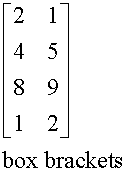
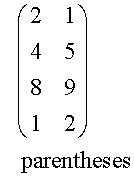
A matrix with m rows and n columns is called an m by n or m x n matrix.
This is also called its order.
If m=n, the matrix is called a square matrix.
If m=1, the matrix is called a row matrix, or row vector.
If n=1, the matrix is called a column matrix, or column vector.
Examples
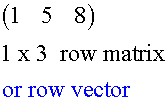
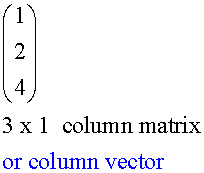
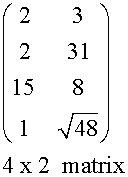
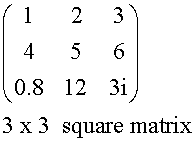
Elements
Each element in a matrix is addressed by its
row and column as double suffixes.
aij denotes the element in the ith row and jth column.
The elements of an m x n matrix:
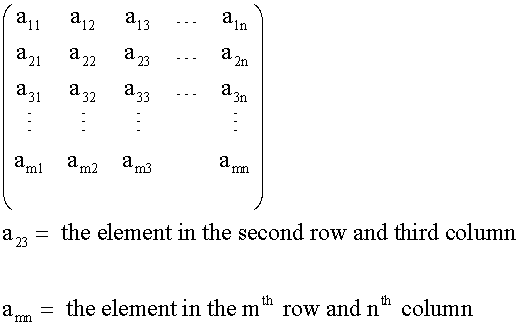
Example
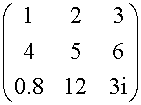
a13=3 a21=4 a34 does not exist
Matrix notation
An m x n matrix is often denoted by a capital letter in bold.
In written work, a wavy line is drawn under the capital letter.
It can also be denoted by a general element enclosed in brackets.
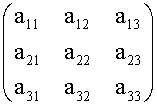
Can be denoted as A , ![]() , (aij) or (a)
, (aij) or (a)
A row or column matrix is often denoted by a lowercase letter in bold.
![]() can be denoted as y ,
can be denoted as y , ![]() , (yj) or (y)
, (yj) or (y)
Equality
Two matrices are equal only if they are of the same order and contain corresponding elements.
Examples
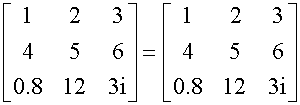
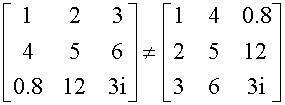
Matrix Addition & Subtraction
Only matrices of the same order can be
added or subtracted.
Each element is added or subtracted to its corresponding element.
Matrix addition is commutative
![]()
Example
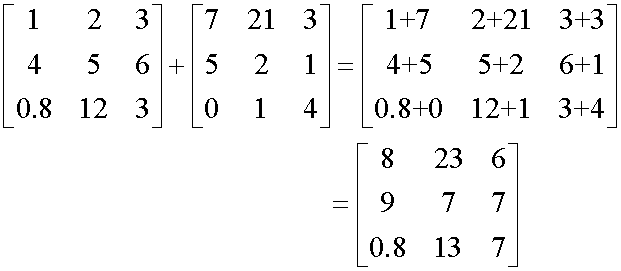
Example
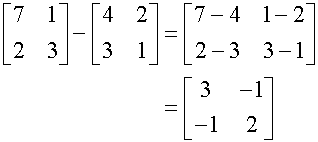
Example
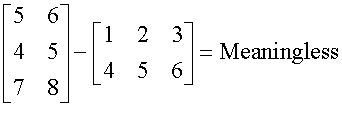
Scalar Matrix Multiplication
To multiply a matrix by a scalar, multiply each element by the scalar.
Example
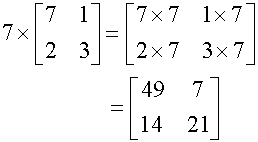
Matrix Multiplication
This can only be done if the number of columns in the first matrix is equal to the number of rows in the second.
i.e. If A is an m x n matrix and B is as n x p matrix
then the product A.B is possible but B.A is not possible.
Let B be an m x n matrix and A be an n x p matrix.
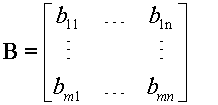
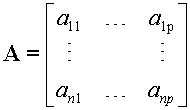
B.A is possible, A.B is not possible
Let the product BA=C
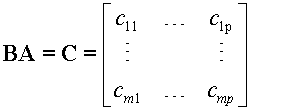
C is defined

or
![]()
Matrix multiplication could be described as finding the scalar product of each row in the first matrix by each column in the second.
Example
Let
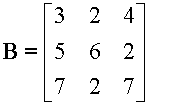
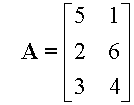
B is a 3x3 matrix A is a 3x2 matrix
so B.A is possible.
A.B is not possible, so multiplication here is not commutative.
![]()
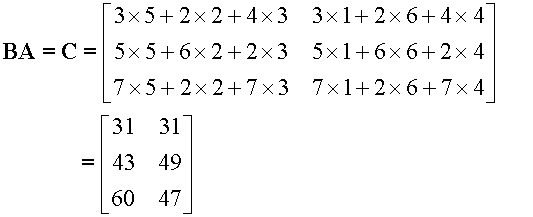
Note
The product of an m x n matrix with an n x p matrix
is a matrix with order m x p
In the product B.A
A is pre-multiplied by B
B is post-multiplied by A
Matrix multiplication is associative
![]()
and distributive
![]()
provided B and C have the same order and that
the number of columns in A equals the number
of rows in B and C.
Transpose
The transpose of a matrix A is written A’ or AT
It is found by interchanging the rows and columns, so that
a’ij = aji
Example


Notice that the leading diagonal remains the same

and that the other entries have been flipped.
Note
![]()
![]()
![]()
Special matrices
A square matrix is symmetric if aij = aij
Example

A symmetric matrix has transpose AT =A
A square matrix is skew-symmetric if AT =-A

Notice that the leading diagonal is zero
A Diagonal matrix is a square matrix whose
non leading diagonal elements are zeroes.
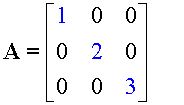
The Unit or Identity matrix is a diagonal matrix whose
leading diagonal elements are all ones.
It is called I.
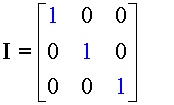
![]()
The Null or Zero matrix is a matrix made purely from zeroes.
It is called 0.
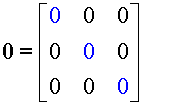
Unlike in ordinary algebra,
A.B = 0 does not allow the assumption that
either A or B is zero.
Example

Transformation Matrices
Linear transformations can be described by a mapping
such that T maps the points (x,y) to (x’,y’)

or

where A (an mxn matrix)
is called the transformation matrix of T.
T:x’ = ax + by, y’ = cx + dy can be written
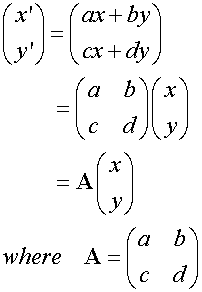
Example
Find the images of the points A(1,2) , B(3,4) and C(5,6)
after it is translated by the matrix

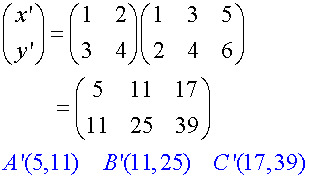
Reflections
Reflection in x axis

Reflection in y axis

Reflection in line y=x

Reflection in line y=-x

Rotations
Rotation 90◦ anticlockwise about the origin.

Rotation 180◦ about the origin.

Rotation 90◦clockwise about the origin.

Rotation θ anticlockwise about the origin.

x’ = xcosθ – ysinθ y’= xsinθ + ycosθ
Enlargement with scale factor
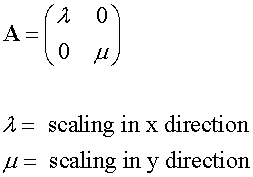
Example : scale factor 2

Example : scale factor 1/2

To undo the effects of a transformation,
premultiply the image vector by the inverse of the
transformation matrix.
If the inverse of the transformation matrix
equals its transpose, then the transformation matrix
is orthogonal.
If a point is transformed to its own image, it is called invariant.
